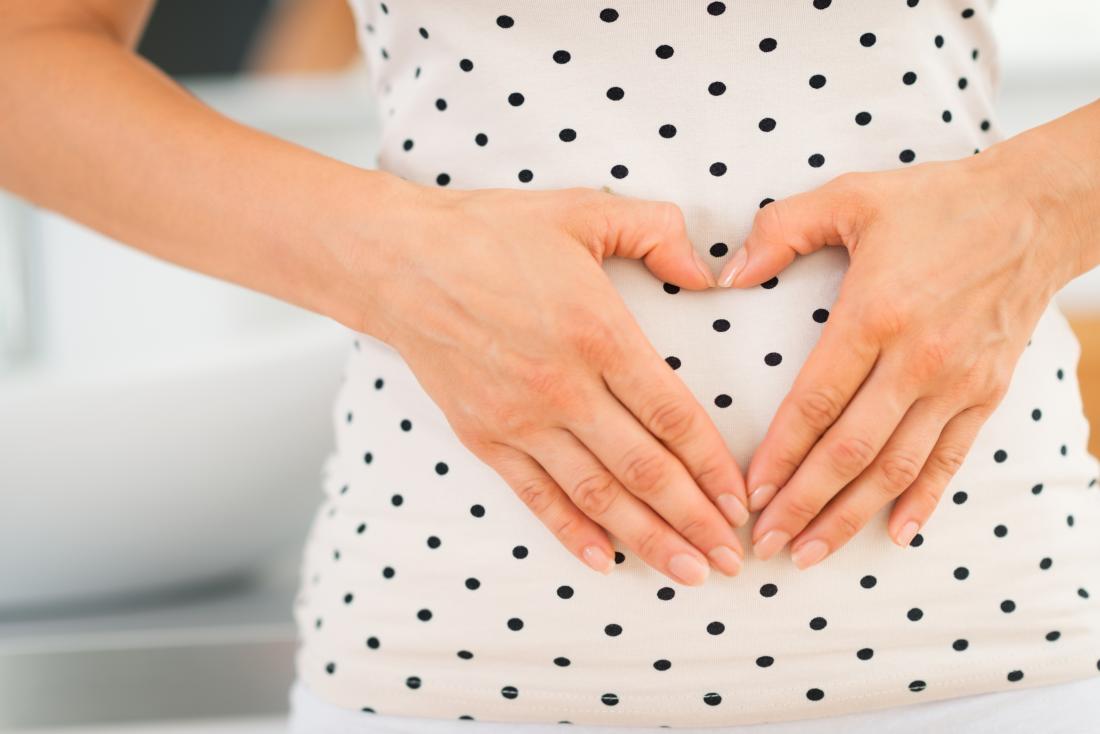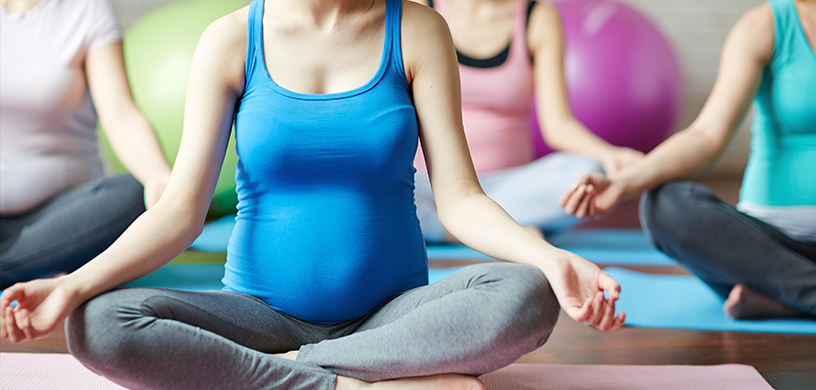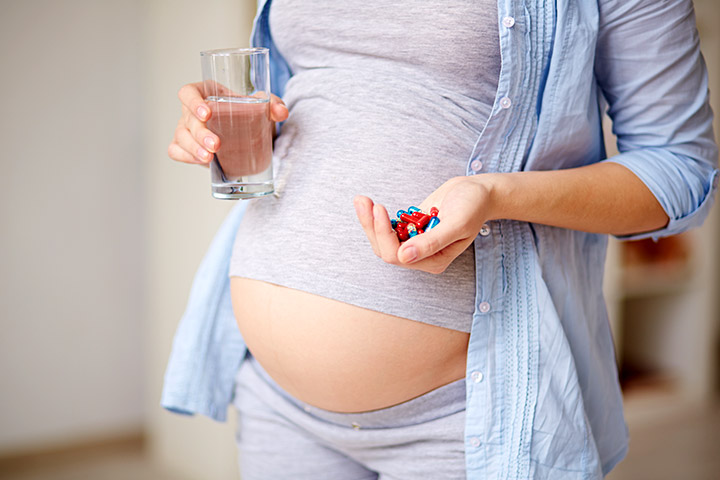Pregnancy is a beautiful phase of every women's life; with little precaution this journey can be memorable. Hellodox wishes happy nine months with expert advice on yoga, exercise, meal plans, natural care and home care. Get the best pregnancy care tips and charts on HelloDox.
Endometriosis worry about whether they’ll be able to conceive and carry a child. With endometriosis, uterine (endometrial) tissue collects outside of the uterus, in and around the reproductive organ. The result is often painful inflammation and the development of blood-filled cysts and bands of scar tissue called adhesions.
Fertility can be at risk when these endometrial tissue growths get in the way of the normal functioning of reproductive organs. Endometrial tissue that forms around the ovaries, for example, can keep eggs from being released. When the tissue forms around the fallopian tubes, it can get in the way of sperm traveling to the egg, or the fertilized egg from making its way to the uterus.
Although it can be challenging, G. David Adamson, MD a reproductive endocrinologist and surgeon with ARC Fertility and medical director of the Palo Alto Medical Foundation’s In Virtro Fertilization (IVF) Program sounds a hopeful note. Lots of women with endometriosis — as much as one-third — get pregnant naturally, without any fertility treatment at all, he says.
Even if a woman doesn’t conceive after a year of unprotected intercourse, he says that eventually, in some way or another, many women with endometriosis eventually do become pregnant. “With IVF, most women will get pregnant,” Dr. Adamson says.
“A big change from even a decade ago is the increased focus on research to understand and treat infertility in endometriosis going on around the world today,” adds Adamson, who is also president of the World Endometriosis Research Foundation. “Unfortunately, there isn’t a breakthrough yet, but we’re promoting global research and collaboration like never before. Many major research centers are collecting data and collaborating to find solutions.”
Surgery, Hormones, and Other Endometriosis Fertility Solutions
While endometriosis often makes conceiving a baby more difficult, it by no means prevents it, according to a review published in 2014 in Frontiers of Surgery. Surgery to remove endometriosis lesions is one option. But risks with this approach include the possibility that endometriosis symptoms will actually get worse, and interfere with blood flow to the ovaries. Surgery can also create scar tissue that’s worse than the original endometrial growth.
That said, surgery is also often successful, leading to pregnancy in 30 to 80 percent of women — though success depends in part on the severity of the disease, according to Adamson. A study published in June 2017 in the journal Acta Obstetricia et Gynecologica Scandinavica adds that surgery for endometriosis-associated infertility has become controversial in many parts of the world because its overall effectiveness is unclear.
If obstruction and blockages were the only problem, a simple surgery might be more consistently successful. But endometrial tissue in and around reproductive organs can lead to a separate set of problems, upsetting the normal chemistry of reproductive organs. It can get in the way of the delicate hormonal balance that helps fertility, for example, and change the mix of chemicals that make eggs ready to be fertilized.
Many experts believe IVF is helpful for women with severe endometriosis, especially those with many adhesions. But for women with mild disease, there’s still no clear consensus. The use of a hormone such as leuprolide along with IVF may help, but Adamson says researchers are still trying to understand how long women should be on this potent drug.
How to Make Pregnancy Possible
To prepare for making pregnancy possible with endometriosis, your doctor will probably start an evaluation of hormones and other chemicals in your body. Diagnostic tests like laparoscopy, hysteroscopy, and hysterosalpingography can also be very valuable in helping to understand what’s going on.
Making the choice among fertility drugs, surgery, IVF, and other assisted reproductive technologies is not easy. Fertility treatments can be expensive and are not always covered by insurance. Some treatment options work for some women, and not for others.
Choosing whether to pursue pregnancy with endometriosis is a very personal decision that depends on many factors, including the severity of your disease and your age. These factors can affect the quality and quantity of your eggs, even without the added complication of endometriosis.
Your decision might be influenced by heredity factors, too. Although most women with endometriosis have children who don’t go on to develop the condition, studies consistently show an increased risk of endometriosis for women whose mothers have it. Researchers don’t know yet whether this connection is the result of genetics or if it’s related to environmental factors — or both.
Gone are the days when women in their late 30's and above mostly faced difficulties in getting pregnant. In today's world with so much of stress, anxiety and health complications, incidences of are on the rise. IVF treatment has been a pathbreaking invention that has enabled many couples to embrace parenthood filling their lives with happiness and positivity. In this article, we will discuss the steps of IVF for people to have a better understanding of the revolutionary procedure.
Once the quality, mortality, morphology, quantity of the egg and the sperm along with the female reproductive organs (uterus, ovary, fallopian tubes, endometrial thickness, to name a few) and hormones (PRL, FSH, TSH, LH) have been examined, the specialist starts with the IVF procedure.
Ovulation induction: This step involves stimulation of the ovaries to enhance the production of the eggs. Most females are given a shot of the hormones LH or FSH or both to stimulate the ovaries. Following the ovulation induction, the doctor monitors the progress through blood tests to determine the estrogen (should be high) and progesterone level (should be relatively lower). An ultrasound of the vagina also plays a pivotal role in determining the functioning of the ovaries and the development of the follicles.
Egg and Sperm retrieval: A Transvaginal ultrasound aspiration or a Laparoscopy are often performed to retrieve the egg. The procedure involves the use of a fine needle which is inserted into the upper wall of the vagina. With the aid of a vaginal ultrasound, and using a gentle suction, the fluid is removed from the follicles, following which the egg are isolated. The doctor then places the retrieved egg(s) in a culture medium. Soon the retrieved eggs are incubated. For the sperm retrieval, the semen sample of the male are used. From the fluid (semen), the sperms (normal and actively moving) are collected. In some individuals, the sperm may be collected from the testicles directly by a procedure known as Testicular Aspiration.
Fertilization: The in-vitro fertilization of the eggs can be brought about by
Mixing the eggs with the sperms in-vitro in a laboratory followed by an overnight incubation, a procedure known as Insemination.
In case of a low sperm count, the doctor may opt for ICSI or Intracytoplasmic sperm injection. In ICSI, instead of the penetration of the sperm into the egg, a healthy and active sperm is selected and injected directly into the egg.
Embryo transfer: The embryos resulting from the fertilization are examined with utmost care to select the healthy embryo(s) for the transfer. This is transferred into the uterine cavity via a catheter placed into the vagina.
A bed rest is advised for 24 hours following the embryo transfer. Soon after (two weeks following the retrieval of the eggs), tests are conducted to check if the treated female is pregnant or not.
Yoga is widely recommended as a good exercise for pregnant women: It keeps the body limber, tones muscles and can relieve stress. But it comes with caveats, warnings that some poses can be dangerous and that all yoga should be done gently. Many women are also worried about doing yoga in the final weeks of their pregnancy.
A new study, published in the journal Obstetrics & Gynecology and described in the Harvard Health Blog, offers evidence that many yoga poses are safe until quite late in pregnancy -- including some that have previously not been recommended.
The study, led by a researcher from the Jersey Shore University Medical Center in Neptune, N.J., involved 25 healthy women who were 35 to 38 weeks pregnant. Ten practiced yoga regularly, eight were familiar with yoga and seven had no yoga experience at all. In one-on-one sessions with yoga instructors, the women performed 26 yoga postures. In some cases, the women were permitted to balance themselves with the aid of chairs or a wall.
The poses included four that some experts have deemed contraindicated for pregnant women: corpse pose, happy baby pose, child's pose and downward-facing dog.
But during all 26 poses, for all the women, vital signs of both mother and baby remained normal, the women felt safe and comfortable, and none had any problems such as contractions or vaginal bleeding within the following 24 hours. (Three women reported some muscle soreness but still liked the experience.)
The Harvard article noted that most women experience anxiety during pregnancy and about 13 percent of pregnant women experience clinical depression. "This study . . . adds to the growing scientific evidence that yoga is a helpful, safe tool to reduce stress, anxiety and depression throughout pregnancy," wrote the author, Marlynn Wei.
The consumption of painkillers during pregnancy have been debatable for a while now. Pregnancy can bring with it a lot of ailments like constipation, rashes, nausea and back pain for which some women may rely over the counter drugs. While some are safe, others may not be. Just because it is easily available that does not mean it is safe for consumption during pregnancy.
Previous studies have showed that the consumption of paracetamol during pregnancy may affect the development of sex organs in unborn boys. This new study suggests that it may affect fertility in females too. Using painkillers in pregnancy may reduce fertility in subsequent generations, warns the study. The study was published in the journal Scientific Reports.
Several tests conducted on rats revealed that when a mother was given painkillers during pregnancy, her female offspring had fewer eggs, smaller ovaries and smaller litters of babies than those not exposed to the drugs.
The findings are significant given the similarities between the reproductive systems of rats and humans, although it is difficult to directly extrapolate these results to pregnant women, the researchers noted. "It's important to remember that this study was conducted in rats not humans, however, there are many similarities between the two reproductive systems,” said Richard Sharpe, professor at the University of Edinburgh in Britain.
In addition to affecting a mother's immediate offspring, the study also showed that the effect of such drugs were extended to the subsequent generation of rats. The resulting females, the grand daughters of the mother given painkillers in pregnancy, also had reduced ovary size and altered reproductive function, said the researchers.
Like previous studies, this one too showed that exposed male offspring were also affected at birth - showing smaller numbers of cells that give rise to sperm in later life. However, their reproductive function recovered to normal levels by the time they reached adulthood.
Researchers suggest that pregnant women should stick with the current guidelines to use painkillers at the lowest possible dose, for the shortest possible time. Scientists tested the effects of two painkillers in pregnant rats - paracetamol and a prescription-only painkiller called indomethacin, which belongs to the same class of drugs as ibuprofen and aspirin. Rats were given the drugs over the course of several days - four days for indomethacin or nine days for paracetamol. Paracetamol is known to act as a hormone disruptor in the womb that can affect the normal brain development of the foetus.
"These studies involved the use of painkillers over a relatively long period. We now need to explore whether a shorter dose would have a similar effect, and how this information can be usefully translated to human use," said co-author Richard Anderson, professor at the University of Edinburgh. It is also suggested that tablets that combine paracetamol and caffeine should be avoided. High levels of caffeine can result in babies having a low birth weight and they can have other health issues later in life.
Iron deficiency affects one in five of the world's population and is more prevalent in pregnant women, say researchers. Thyroid disorders and iron deficiency (ID) are associated with obstetrical and foetal complications in expecting mothers. The finding showed that iron deficiency increases the risk of having a thyroid disorder as well as raises complications such as miscarriages and pre-term births.
Iron is essential for the normal functioning of thyroid peroxidase (TPO-abs) - a protein essential for the correct functioning of the thyroid. Pregnant women need to make enough thyroid hormone for the full development of their babies' brains, which is especially critical during the first semester when the foetus has not developed a thyroid gland of its own, said the paper.
Iron deficiency also causes thyroid autoimmunity - a disease where the immune system mistakenly destroys healthy thyroid cells; causing thyroid hormone levels to fall. It can be particularly dangerous for pregnant women.
For the study, the team followed 1900 pregnant women who were in their first trimester.
They measured the women's blood ferritin - an indicator of iron deficiency - antibodies against the thyroid peroxidase - indicating thyroid autoimmunity -, the thyroid hormone free thyroxine (FT4) and thyroid stimulating hormone (TSH).
A third or 35 per cent of the study participants showed iron deficiency.
"Considering that our study took place in a relatively wealthy country, our results show that even in 2016, iron deficiency remains an important problem," said lead author Kris Poppe from Saint-Pierre University Hospital in Brussels.












